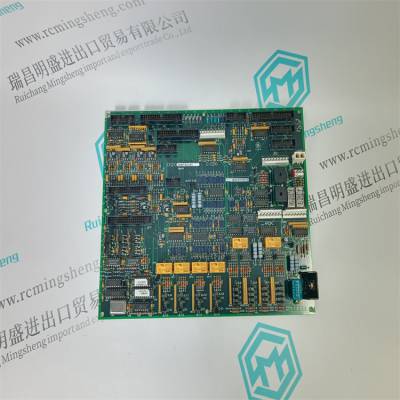 S71262-NANANA 模块用于控制传输 Kollmorgen
¥6973.00
S71262-NANANA 模块用于控制传输 Kollmorgen
¥6973.00
 S71262-NANANA 模块用于控制传输速度 Kollmorgen
¥6973.00
S71262-NANANA 模块用于控制传输速度 Kollmorgen
¥6973.00
 S71262-NANANA 模块用于控制传输 Kollmorgen
¥6973.00
S71262-NANANA 模块用于控制传输 Kollmorgen
¥6973.00
 S71262-NANANA 模块用于控制传输速度 Kollmorgen
¥6973.00
S71262-NANANA 模块用于控制传输速度 Kollmorgen
¥6973.00
60WKS-CE240/6PB 60WKS-CE240 伺服电动机 Kollmorgen
60WKS-CE240/6PB 60WKS-CE240 伺服电动机 Kollmorgen
60WKS-CE240/6PB 60WKS-CE240 伺服电动机 Kollmorgen
a、 JCIDS:
1) 对于作为DOTMLPF分析一部分的装备设施、安装和现场权衡
2) 用于详细说明互操作性要求。
3) 约束处理材料和非材料解决方案的需求。
4) 将条令和TT&P与材料和非材料解决方案相关联。
b、 PPBE:
1) 在规划和方案编制过程中,许多规则适用于成本效益
权衡、成本估算、项目结构和项目约束。
c、 DAS:
1) 在DAS的技术和程序方面。
2) 在规范、标准、指令和指南中。
d、 SE:
1) 在描述结构和行为的系统的体系结构描述中。
2) 在整个设计和开发过程中应用的标准中。
e、 老年退休金计划:
1) 规则是条令、TT&P和培训出版物中包含的基本要素。
规则贯穿于以下各项的开发和体系结构描述:
操作过程。
f、 CPM:
1) 在描述和管理
文件夹
2) 描述适用于投资组合的标准和约束。
演示
规则可以用多种方式表示。典型的行为和树结构以及
可以使用各种逻辑映射技术来描述规则、它们之间的关系和
互动。可以使用许多众所周知的逻辑分析来识别冲突规则
仪器和技术。
转到页面顶部↑
隐私政策|网络政策124;联系人
59
DM2-目标
http://cio-nii.defense.gov/sites/dodaf20/goals.html[2011年3月3日下午3:43:20]
首页DoDAF-DM2工作组DoDAF期刊***部元数据注册想法链接
DM2数据组
目标
目标数据被定义为表示期望的效果、目的、愿景、结果、目标,
对其进行操作过程、项目或特殊程序的。目标是
用于帮助指导组织确保日常运营与
战略方向。目标是长期持续努力的目标。在里面
一般而言,目标的建立是为了提供预期未来状态的描述。他们是
旨在提供一个目标,活动的重点是实现
期望的效果(目标)。目标为活动参与者提供方向感和观点
当活动朝着某个终点前进时的预期。目标(及其别名)
描述资源(物资、信息、执行者或地缘政治)的期望状态
范围。)目标数据可以表示为企业目标、***战略目标,即:
适用于整个组织,或作为定义所需的更具体的运营目标
工作过程的结果。
数据组描述
关于目标数据组,应注意以下几点:
a、 虽然语言听起来不同,但预期效果的含义(变化
某些对象的状态)与目标的含义相同。
b、 某些对象状态的所需更改会导致受规则约束的活动
由表演者执行。某些活动被视为事件,因为:
它们相对于视觉的辨别框架具有接近零的持续时间,
表演者等。
c、 在DoDAF中,确定和描述目标,为活动和
以使这些活动朝向期望的效果。当执行者执行
活动,执行者在活动规定的限制范围内执行
(规则)并以期望的效果为目标。这种效果要么满足,要么有助于
实现反映组织愿景的既定目标。
核心流程中的使用
目标是在组织的各个层次和***部的每个核心过程中制定的。
目标可以应用于企业或解决方案架构工作。目标特别重要
对于从事体系结构开发工作的团队评估以下方面的成功非常有用:
努力以及努力如何有助于实现更***别的目标、使命
需求、能力开发或服务和系统开发,以支持
部门或组织业务运营。
目标数据有助于:
a、 确定活动范围,以确保在执行活动时使用的资源有助于
组织的总体目标和愿景。
b、 建立执行活动的规则,以创建边界
效率和有效性(约束条件),并确定以下情况
其中执行活动(事件)。
c、 确定确定活动成功与否的措施,符合
既定果阿
60WKS-CE240/6PB 60WKS-CE240 伺服电动机 Kollmorgen
60WKS-CE240/6PB 60WKS-CE240 伺服电动机 Kollmorgen
v
a. JCIDS:
1) For Materiel Facility, Installation, and Site trade-offs as part of DOTMLPF analyses
2) For detailing Interoperability requirements.
3) In constraining requirements dealing with material and non-material solutions.
4) In relating Doctrine and TT&P to material and non-material solutions.
b. PPBE:
1) In the Planning and Programming process many rules are applied to cost-benefit
tradeoffs, cost estimation, program structure, and program constraints.
c. DAS:
1) In both technical and programmatic aspects of the DAS.
2) In specification, standards, directives and guidelines.
d. SE:
1) In the architectural descriptions of systems describing both structure and behavior.
2) In standards applied throughout the design and development process.
e. Ops Planning:
1) Rules are the basic elements contained in Doctrine, TT&P and training publications.
Rules are used throughout the development and architectural descriptions of
Operational processes.
f. CPM:
1) In describing and governing both the programmatic and technical aspects of the
portfolio.
2) In describing the standards and constraints applicable to the portfolio.
Presentation
Rules can be represented in many ways. Typically behavioral and tree structures as well as
various logic mapping techniques can be used to depict rules, their relationships and
interactions. Conflicting rules can be identified using many well know logic analysis
instruments and techniques.
Go to top of page ↑
Privacy Policy | Web Policy | Contacts
59
DM2 - Goals
http://cio-nii.defense.gov/sites/dodaf20/goals.html[3/3/2011 3:43:20 PM]
Home DoDAF-DM2 WG DoDAF Journal DoD Meta Data Registry IDEAS Links
DM2 Data Group
Goals
Goals data are defined to represent the desired effect, ends, visions, outcomes, objectives,
etc. for which operational processes, projects, or special programs are conducted. Goals are
used to help guide the Organizations to ensure that everyday operations are aligned to a
strategic direction. A goal is an end toward which long-term, ongoing effort is directed. In
general, goals are established to provide a description of the intended future state. They are
established to provide a target to aim toward, whereby activity is focused on attaining the
desired effect (goal). Goals provide participants in activities a sense of direction, and a view
of what to expect as activity progresses toward some end point. A Goal (and its aliases)
describe a desired state of a Resource (Materiel, Information, Performer, or Geopolitical
Extent.) Goals data can be expressed as enterprise goals-high-level strategic goals that
apply to the entire organization-or as more specific operational goals that define desired
outcomes of the work process.
Data Group Description
The following should be noted about the Goals Data Group:
a. Although the language sounds different, the meaning of a desired effect (a change in
state of some object) is the same as the meaning of goal.
b. A desired change in the state of some object leads to activities constrained by Rules
that are performed by Performers. Some Activities are considered Events because
they are of near-zero duration with respect to the frame of discernment of the Vision,
Performers, etc.
c. Within DoDAF, goals are identified and described to provide direction to Activities and
to orient those Activities toward a desired effect. When a Performer executes an
Activity, the Performer does so within the limitations prescribed for the Activity
(Rules) and aims toward a desired effect. That effect should either meet, or contribute
to meeting, established Goals that reflect the vision of the organization.
Usage in Core Processes
Goals are established at all levels of the organization and each of the core DoD processes.
Goals can be applied to the Enterprise or Solution architecture effort. Goals are particularly
useful to teams undertaking an architecture development effort to evaluate the success of
the effort and how the effort contributes to achieving higher level goals, mission
requirements, capability developments, or development of Services and Systems to support
Department or organizational business operations.
Data for Goals are useful for:
a. Scoping an activity to ensure that resources utilized in executing an activity contribute
to the overall goals and vision of the organization.
b. Establishing rules under which activities are executed to create boundaries for
efficiency and effectiveness (Constraints) and establishing those circumstances under
which an activity is executed (Event).
c. Establishing measures to determine the success of an activity, consistent with an
established goa
 在线问
在线问
